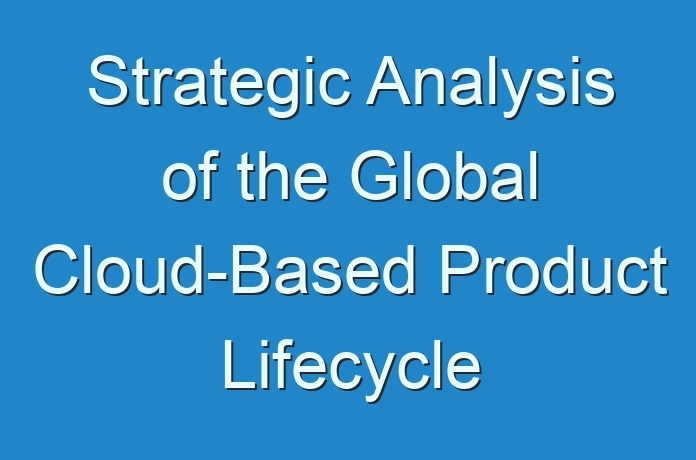
Product life cycle management (PLM) is a process or system used to manage the data and design process associated with the life of a product from its conception and envisioning through its manufacture, to its retirement and disposal. PLM helps to manage the entire lifecycle of a product efficiently and cost-effectively. Today, manufacturers increasingly need to share product data with stakeholders both inside and outside the organization (including engineering, operations, quality, procurement and marketing). Manufacturers need to collaborate, track and regulate changes to the product with their corresponding team. Traditional or on-premise PLM solutions often turn ineffective cost-wise, especially, for the small and medium size businesses. Small and medium size enterprises (SMEs) have been averse to spending high on PLM solutions till recently. Cloud- based PLM solution is growing in popularity with manufacturers around the world which allows them to consolidate information about product development, streamline change orders and requests and improve communication with suppliers. It is an easier way to manage complex product data in fast-moving and geographically dispersed organizations with anyone accessible with an internet connection. Further, cloud-based PLM is more cost-effective as compared to traditional on-premise PLM and is cited to offer improved return on investment (ROI).
Cloud-based PLM service can be adapted according to customer specific requirements. Thus, multi-national enterprises can implement new processes faster and quickly deploy scalable solutions to its processes worldwide. Cloud-based PLM solutions have a better UI (User Interface) and can provide automated software updates in less time as compared to on-premise based PLM solutions. The process of any software up gradation in cloud-based PLM requires very less time compared to on-premise based PLM service. On-premise PLM service has an expensive and time-intensive integration process which requires software licenses and a significant infrastructure investment. In contrast, cloud PLM service is maintained by the software provider, which means set-up is easy, improved scalability and reduced risks.
Planning to lay down future strategy? Perfect your plan with our report sample here https://www.transparencymarketresearch.com/sample/sample.php?flag=S&rep_id=15575
Cloud-based PLM includes features such as comprehensive virtualization capabilities, robust security, architectural partitioning and distributed processing. Hence, manufacturers can handle multiple business units and have ease of use for non-engineers and designers. Thus, it can be helpful to support idea generation and design as previous data related to product is freely available in cloud. Further, the product data management can be secured with the use of advanced and powerful firewalls provided by the service provider. The subscription based pricing model that avoids up-front costs and can increase profitability for the manufacturers. Cloud-based PLM service is expected to find more use in bill of materials (BOM) and supply chain management in coming years.
Investments in PLM are still not growing in a uniform way and are being implemented with different degrees of maturity in the different industrial segments. Cloud-based PLM finds its application in transportation, life science, consumer products, consumer electronics, machinery and mechanical part manufacturing, energy and utility, Aerospace and defense, pharmaceutical and automotive sector. Cloud-based PLM can find more use in companies which cover a wide geographical region and have to connect with its stakeholders across the globe. Some of the key companies providing cloud based PLM are Arena Solutions, Infor Inc., Oracle Corporation, Aras Corporation, Siemens AG, SAP Inc., PTC Inc., Dassault Systemes, Autodesk Inc and IFS AB.
This study by TMR is all-encompassing framework of the dynamics of the market. It mainly comprises critical assessment of consumers’ or customers’ journeys, current and emerging avenues, and strategic framework to enable CXOs take effective decisions.
Our key underpinning is the 4-Quadrant Framework EIRS that offers detailed visualization of four elements:
- Customer Experience Maps
- Insights and Tools based on data-driven research
- Actionable Results to meet all the business priorities
- Strategic Frameworks to boost the growth journey
Looking for exclusive market insights from business experts? Buy Now Report here https://www.transparencymarketresearch.com/checkout.php?rep_id=15575<ype=S
The study strives to evaluate the current and future growth prospects, untapped avenues, factors shaping their revenue potential, and demand and consumption patterns in the global market by breaking it into region-wise assessment.
The following regional segments are covered comprehensively:
- North America
- Asia Pacific
- Europe
- Latin America
- The Middle East and Africa
The EIRS quadrant framework in the report sums up our wide spectrum of data-driven research and advisory for CXOs to help them make better decisions for their businesses and stay as leaders.





